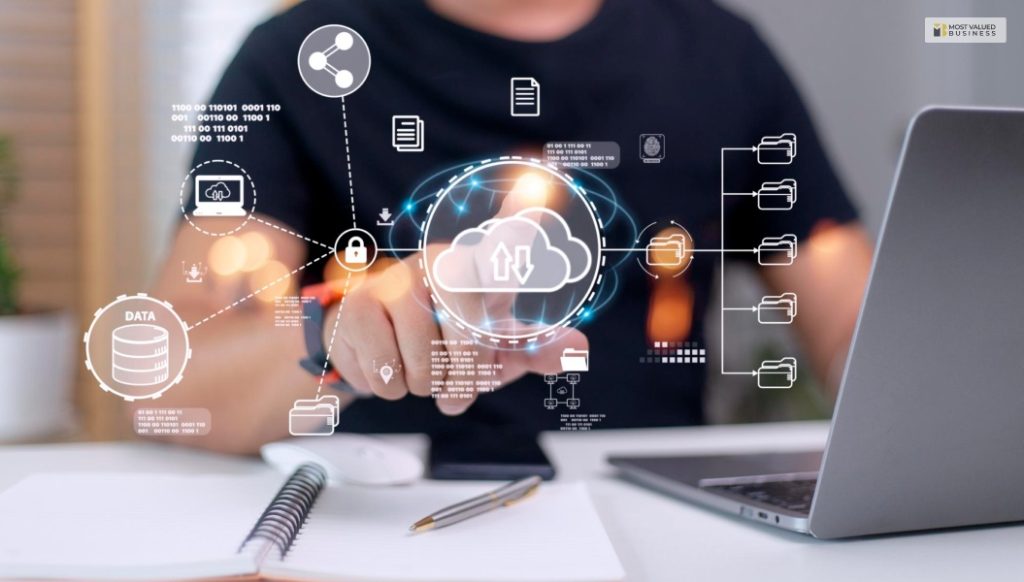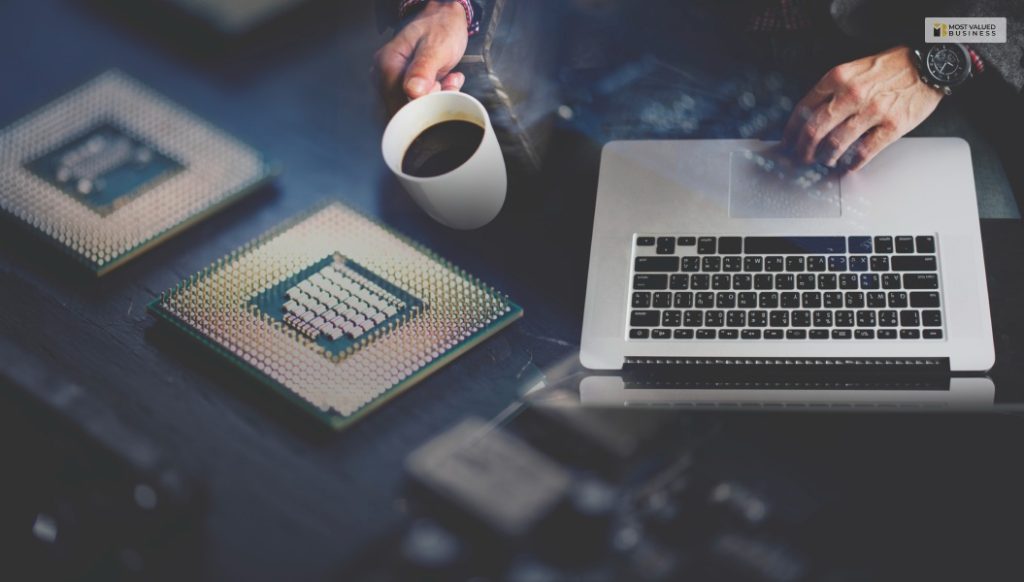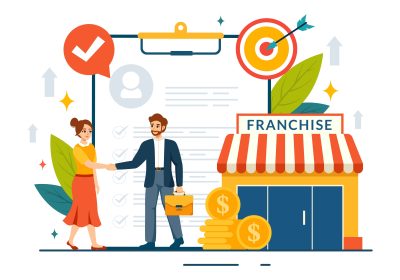Information Systems: Definition, Importance, Examples, And More
With various advancements in technology, there have been various incorporations of information technology in business. The development of information systems is one of the major implementations of information technology in business. Information systems show how technology and humans interact. Here, the major focus is to provide better output for the business.
In this article, you will learn about information systems in general and how they work for businesses. Then this article will also show you the major components of an information system. After that, you will also learn about the different types of information systems in general. Furthermore, this article describes the management aspects of an information system and the impact of information systems in the future.
What Are Information Systems?

According to TechTarget,
“An information system (IS) is an interconnected set of components used to collect, store, process and transmit data and digital information. At its core, it is a collection of hardware, software, data, people and processes that work together to transform raw data into useful information. An IS supports a variety of business objectives such as improved customer service or increased efficiency.”
Generally, within an information system, there are tools that organizations use to inspect, manage, and analyze data. This access to data helps organizations to make decisions while improving profitability and efficiency. Since organizations always make decisions based on data, there is a high use of information systems.
It is easy to confuse the term information system with a computer system. In reality, neither are the same, as computer systems are a part of the information system and do not consist of all components and processes of an information system. This is because the people and processes of the organization are part of its information system.
The information system is the way in which the people of the organization use IT and data to continue processes in the organization. It also includes how the people of the organization manage the data generated from the computer systems to make various decisions in the organization.
Apart from that, an organization’s information system is also responsible for supporting knowledge management and communication. With the help of information systems, the people of the organization can perform various business functions of the organizations. These include finance, accounting, operations, human resource operations, supply chain management, etc.
With the implementation of an efficient information system, it is also easier to enable new business models and opportunities. Hence, it gets easier to include AI and automation practices.
How Does Information Systems Work?

Zapier.com states –
“Information systems encompasses the tools that organizations use to collect, manage, and analyze data. This data guides decision-making to improve efficiency and profitability. Every decision an organization makes should be data-driven, so the uses of information systems are practically limitless.”
With the right implementation of information systems in place, an organization can bring a variety of functions into one place. In addition to that, a good information system also helps the organization’s IT department acquire, store, and use information in the right manner. As a result, it is easier to distribute information for different purposes.
An information system can also produce reports in various formats to support different devices. The types of reports that information systems create include spreadsheets, text files, data visualizations, graphics, etc. Also, with the help of comprehensive platforms, information systems
Any information system consists of a combination of technologies and tools that work together to run processes. The focus is to retrieve, store, process, and disperse data and information in the right way.
Functions Of An Information System
Inside any information system, the following are the major activities that happen in general:
Input
This is where the information system gets raw data as input. Here, an individual enters the data manually, scans documents in the system, or collects data from sensors and devices.
Processing
In this stage, the information system takes raw data from outside and manipulates it according to certain instructions. The process involves sorting, calculations, organization, transformation, etc., which are essential for making data useful.
Output
In this stage, the information system processes the information with the help of information technology, tools, and people. After that, the system delivers the information in a meaningful manner. The information gets out in the form of a screen display, printed report, or transfer to another system.
However, you will need to consider here that an information system does not work in isolation. The final output that is coming out of the system is also capable of input. This helps the system to improve and adapt continuously with time. Basically, this acts as a feedback loop. Furthermore, this loop helps to ensure that the information is up-to-date and accurate.
Major Players Of Information Systems

You already know that an information system is not just information technology consisting of only software and hardware. For effective functioning, an information system consists of a diverse structure that includes people and technology. The following are the major players with an information system:
People
People include individuals who interact with the information system. These individuals enter data into the system and make use of the system’s information. Furthermore, it provides feedback to the system for its betterment. Here, people also include those IT professionals who manage and maintain the system.
Technology
Here, technology includes information technology, as well as hardware and software. With the help of these aspects, the entire system runs properly.
Structure
These include the roles and structure of the information system, which include established procedures and protocols. These protocols talk about processes for data collection, processing, and usage within the organization.
Major Components Of Information Systems

According to an article from Carnegie Mellon University,
“The field of Information Systems involves the effective design, delivery, and use of information and communications technologies to solve problems for companies, governments, and society. Equally, it is about understanding and measuring the impacts of these technologies on people and communities so they can be deployed ethically.”
The following are the five major components of an information system:
1. Hardware
The hardware of an information system includes computers, printers, phones, tablets, smartwatches, displays, etc. Basically, those systems have the power to collect, access, store, and manage information systems. Furthermore, some of the major components of hardware include hard drives, microprocessors, graphics cards, monitors, etc.
2. Software
The software includes programs inside a computer that tells the computer components what to do. Generally, software can be of two types – system software and application software. The system software allows you to manage the functions and files of the computer. On the other hand, the application software is a program made for specific tasks.
3. Sources Of Data
Data sources include databases and data warehouses that store data (both qualitative and quantitative information). With the information system, users retrieve, analyze, and manipulate information with the help of codes or software.
These databases consist of information that users retrieve regularly to do essential operations, like accessing files, saving files, etc. On the other hand, data warehouses are the ones that collect data from multiple sources over time to analyze and inform decisions.
4. Telecommunications
Telecommunication is the process through which a computer shares information with another computer. Here, access to the Internet is the most obvious telecommunication method that comes to mind. Basically, there are a variety of components of a telecommunications system, and these include both wired systems and wireless systems.
Apart from that, with the help of telecommunication, it is possible to access the cloud, where it is easy to store and access data.
5. Human Expertise
Although automation is taking over the tedious tasks of humans, it has still is miles to go to replace humans in all aspects of work and productivity. For example, there are human experts capable of understanding and manipulating data. These processes are essential to build information strategies for your organization.
What Are the Different Types of Information Systems?

“Information systems can be used for both general or specialized purposes. A general-purpose information system focuses more on providing a general service for a range of uses. An example of such an information systems is a database management system. This software helps to organize and analyze general forms of data.”
The types of information systems depend on the current and future objectives of a business. Here are some of the major types of information systems:
Operations Support Systems
These information systems work as a complementary system to certain business operations. For example, the transaction processing system of a bank is a good example of an operations support system. Basically, with this software, the service provider can analyze certain business processes. Furthermore, these systems also help in better management and control of services within a given network.
Management Information Systems
Management information systems include a combination of hardware and software integration. These integrations help an organization to perform its core functions. Hence, these systems help in the gathering of the company’s data from different online systems. These systems not only store information but also analyze and report it in a useful manner. This helps the management of the organization to make better decisions.
Decision Support Systems
With the help of decision support systems, organizations can make better decisions on their operations. In general, the focus of these decision support systems includes analyzing rapidly changing information, which one cannot determine in advance.
These decision support systems are available as automated and human-operated systems. However, there are also systems consisting of a combination of humans and computers. This helps in bringing out maximum efficiency.
Executive Information Systems
They are a type of management support system that helps make decisions at senior levels in the organization. You can also think of these systems as a higher version of a decision support system. However, the major difference that exists here is that the executive information system consists of a more graphical representation and an easy-to-understand user interface. Furthermore, this system also focuses on a broader picture.
How To Build And Manage Information Systems?

According to Zapier.com,
“Information systems is the backbone of data-driven decision-making. It allows organizations to make sense of huge quantities of data and use that information to identify and correct procedural issues. Without it, your organization would remain trapped in the same old inefficiencies that hold it back.”
To build an information system, here are a few aspects you need to consider:
- Make sure you are aware of the needs and demands of your businesses. Furthermore, ensure that your business works as per your key performance indicators.
- Create a plan about how you will improve your existing system. It is highly likely that you already have an information system in place. All you need to do here is refine it.
- List your requirements for what you need more in your existing system. Then, start designing your system based on the needs of your organization.
Impact Of Information Systems In The Future
In the near future, there will be an emergency of new technologies that will heavily influence information systems:
- Artificial Intelligence and Machine learning will play a big role in automating tasks. Furthermore, they will also help in businesses’ decision-making processes.
- The Internet of Things (IoT) includes a growing network of physical devices connected to each other through the Internet. With this connection, there is a higher collection and sharing of data.
- Advancements in information systems are also contributing towards user-friendly and personalized services. Hence, it has become easier for businesses to anticipate the needs of their customers. As a result, they are able to provide better information and services.
Wrapping Up
Hope this article was helpful to get a better understanding of information systems in general. With the development of new technologies and systems, businesses are able to create and implement better information systems. Hence, if you want to improve your existing systems, you will need to have better knowledge of their major components and applications. Do you have more information regarding information systems to add? Consider sharing them with us in the comments section below.
Click Below For More Informative Articles!!



